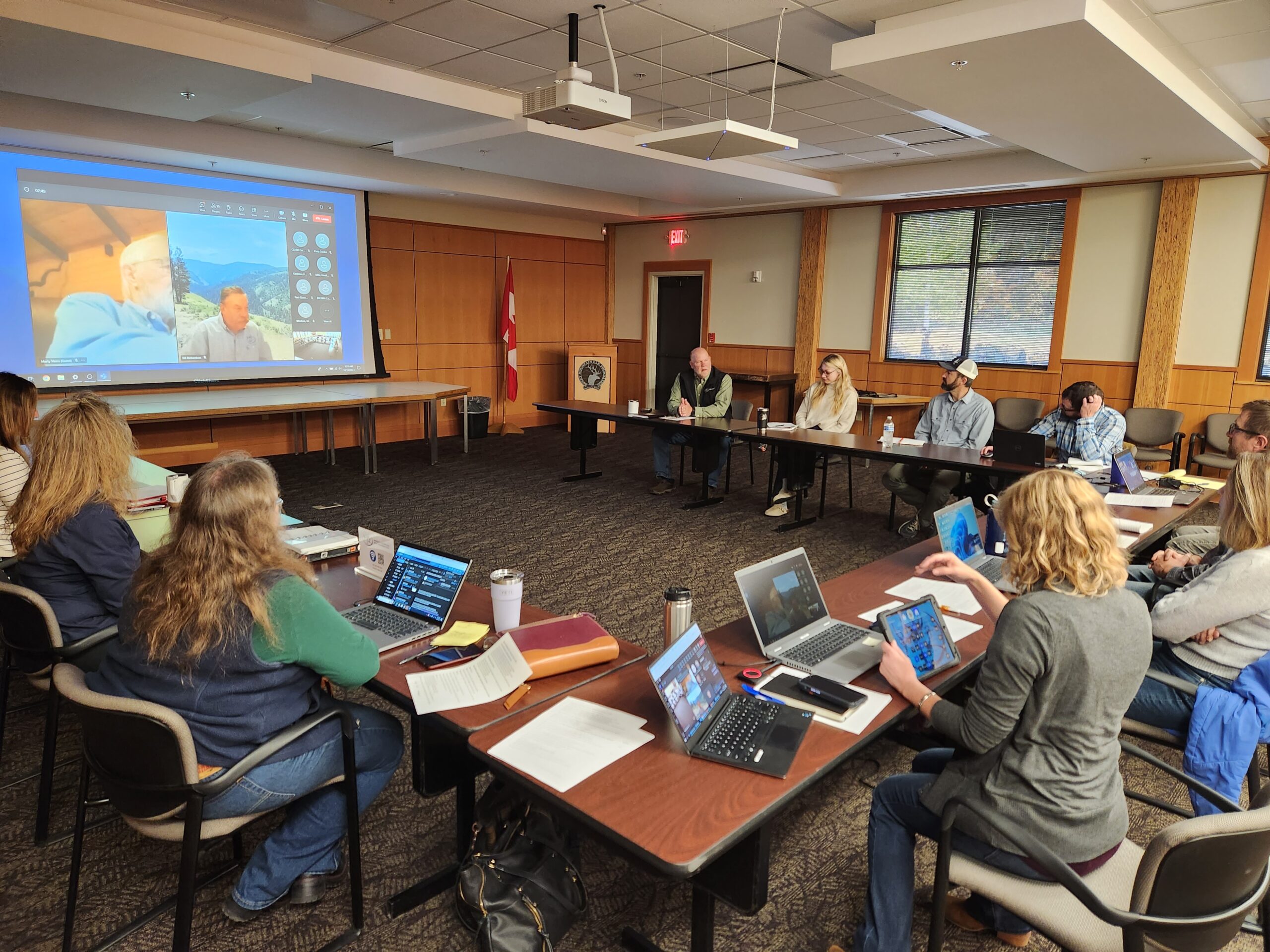It was not exactly a family reunion, or was it? The Rocky Mountain Elk Foundation recently hosted scientists and researchers from the U.S. Forest Service Starkey Experimental Forest and Range as the latest gathering between two organizations spanning four decades dedicated to growing the scientific knowledge of elk and elk management.
Starkey is a world-class research facility in the Blue Mountains of northeast Oregon. Most of the 28,000-acre range is enclosed by a game-proof fence, allowing researchers a unique opportunity to study the effects of elk and deer on ecosystems. Other research focuses on forest management, wildlife, plants and recreation.
Topics for the Starkey-RMEF gathering included forest management, hunting and elk behavior, the impact of climate change on elk and forage, the economic value of elk hunting and other research related to elk, mule deer, wildlife and habitat enhancement and restoration.
“Bringing our two staff members together, both in-person and virtually, is invaluable,” said Karie Decker, RMEF director of wildlife and habitat. “It’s not just our shared history. The more we invest into building our scientific knowledge about elk and other wildlife, the more we can do to ensure the future of those species, hunting and conservation.”
Shortly after its founding in 1984, RMEF founders reached out to Jack Ward Thomas, a renowned research wildlife biologist and avid elk hunter. He supplied critical direction for the fledgling conservation organization suggesting it focus on conserving and enhancing wildlife habitat. Thomas joined RMEF as one of its first members, helped launch the Starkey Research Project and answered the call to serve as the 13th chief of the U.S. Forest Service before serving on the RMEF board of directors from 1997 to 2003, including two years as its chair.
Over the years, RMEF supplied funding for a litany of elk-related projects and studies at Starkey.
RMEF also recently recognized Starkey researcher Mary Rowland who helped develop a ground-breaking study that showed the strong avoidance of elk to forest roads open to public motorized travel. That work alone helped spark changes in wildlife and land management related to road access.
“It was beneficial to meet, strengthen RMEF’s relationship with Starkey researchers, and continue to learn from each other. We look forward to carrying out more collaborative conservation work and research going forward,” added Decker.
(Photo credit: Rocky Mountain Elk Foundation)
